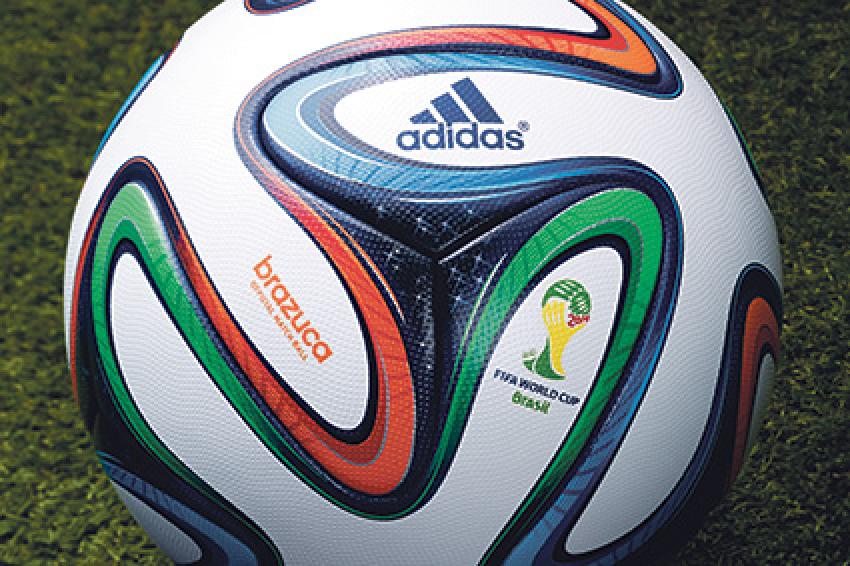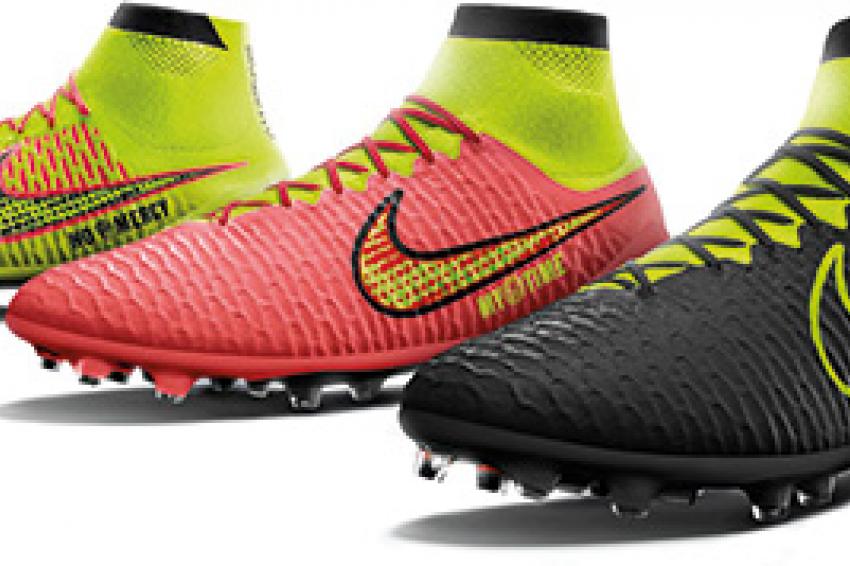Chemistry is ... In the Name of Sustainability
At the FIFA World Cup 2014 in Brazil, Synthetic Materials Provide the Highest Resource Efficiency
Controversy And Competition - The Soccer World Cup from June 12 to July 13 in Brazil will captivate millions of people. However, such a big event is not without controversy. Critics attack the event with terms like environmental destruction and waste of energy and regard it as no longer reasonable. We recently saw the same discussion surrounding the Olympic Winter Games in Sochi, Russia.
Therefore the world football association FIFA and the local Brazilian organizing committee made an effort from the very beginning to arrange a green and sustainable World Cup and, with appropriate measures, take the wind out of the critics' sails.
Here are just a few examples:
- "Green" venues: Many stadiums were LEED-certified according to the criteria of the U.S. Green Building Council. The American LEED model is an internationally recognized certification system; the acronym stands for Leadership in Energy and Environmental Design.
- Waste management: A newly established waste-management system ensures a minimization of waste and the highest recycling rate possible.
- Resource conservation: The efficiency of energy and water will be improved compared with former tournaments, as will the CO2 emission, or carbon footprint. In addition, renewable energy and bio-based materials are favored.
- Success control: Finally, a large-scale report about effect and success of the measures will give account.
Plastics: Important Carrier of Sustainability
The implementation of these general statements will be found in many places, e.g., in the stadium's construction, the interior design, but also in the players' equipment. We find a broad range of innovations regarding improved efficiency, increased performance and sustainability - developed by the synthetics industry worldwide. Here are some related examples:
Construction Elements
Since the sensational pavilion roof construction out of Plexiglas from Röhm (today part of Evonik) at the Olympic Stadium in Munich, synthetics are well-established as building materials in stadium constructions. Their use can be distinguished in two ways. Firstly, a steel construction can be equipped with flat or structured polycarbonate plates, like the Makrolon from Bayer MaterialScience or Lexan from SABIC Innovative Plastics. Secondly, a tentlike construction can use synthetic-coated glass or polyester fabric for roofs and facades. The synthetics of choice are PTFE (3M/Dyneon) and PVC (SolVin). That way the Brazilian stadium icon Maracana got a PTFE membrane roof with a 40,000-square-meter surface. In the Estádio Nacional in the capital city Brasilia, the spectators will be sun- and rain-protected by a transparent plate of Makrolon polycarbonate.
Artificial Turf
Another innovation including synthetics provides the urgently required increase of turf durability. The advantages of the robust, but - concerning the players - unpopular, artificial turf are combined with the natural grass's convenient playing condition in a hybrid system. A very large number of artificial turf fibers, generally made of polyethylene (PE), are implanted in such a way that the grass roots grow together with the artificial fibers. It results in the basis of a robust high-tech field that can be played at least three times as often as common sports fields.
In this application, the long-term stability of the deployed synthetics, the preservation of the mechanical strength as well as the color and shape stability are conditions for a sustainable employment. Additives, in particular antioxidants and light stabilizers, fulfill an important function in order to avoid corrosion and fading. Such high-performance stabilizers have been developed and optimized for this application area by BASF, for instance.
Stadium Seats
A long-life performance and a high fire resistance are the label of sustainable stadium seats. These attributes are ensured by specific additives as offered by specialists like BASF and Clariant. The obligation to sustainability increases the importance of a further material aspect: Recycled and bio- based synthetics are to be included in the seat production. That is why PET seat paneling made of recycled Coca-Cola bottles and sugar-based polyolefin by Braskem improve the stadium's ecological balance.
Coatings
Like the seats, the whole construction of the stadium is exposed to extreme weather conditions. Where the material cannot be protected directly by additives, to avoid corrosion and its consequences, coatings will take over this task. They as well will be custom-made according to the load. Doped with pigments or dyestuffs, they back up the design and improve the overall impression. AkzoNobel, leading in the development and application of innovative coatings, is in demand for the FIFA World Cup stadiums as well.
Superior Gear
Soccer fans all over the world can barely await the World Cup and hope for thrilling matches. A soccer game's quality as well as the players' health significantly depends, among other things, on the personal gear. The major piece of equipment - the ball - also affects the game. In this area, too, elements of sustainability and increase in performance are based on innovations with synthetics.
Jerseys Made of PET Recycling
All the teams will be equipped with jerseys made of PET from a basic material derived from recycled Coca-Cola bottles. Processed to high-tech microfibers, the old bottles provide a fabric that, even in hot and humid Brazil, give the wearer the feeling of a pleasant microclimate. The manufacturers Adidas, Nike and Puma, which equip 26 out of 32 attending national teams, rely on this kind of material, developed in the synthetics-industry labs.
Knitting - the Latest Trend for Soccer Shoes
The most important tool of a player, shoes, seems to have experienced an almost revolutionary change. The lately often used and praised kangaroo leather, in order to build a super light and premium quality shoe, has to yield to high-performance fibers from which the shoes will be knitted like socks. Adidas and Nike simultaneously brought two similar developments on the market. The knitted, socklike upper part is firmly attached to a light and thin high-performance synthetic sole. Known materials such as Pebax by Arkema or Tepex, an innovative fiber composite by Lanxess, are used for the shoe soles. High-quality polyurethane elastomers like Adiprene (Chemtura) cushion the impact load at cap and heel.
The new shoe generation with reduced weight offers increased wearing comfort, improved ball control and even higher protection against injuries. The interaction of material and design accomplishes a combination of high strength and flexibility.
Brazuca - A Technology Dream
Last but not least, Brazuca - the ball everything will turn around at the FIFA World Cup 2014 - is a high-tech development from the synthetic industry, in particular by its client Adidas. Since 1986, the FIFA World Cup balls have not been manufactured from leather but from high-quality polyurethane. For every World Cup, a new optimized ball, initially certified by the renowned Swiss testing institute EMPA, is released.
Consisting of several PU segments that are seamlessly welded together, Brazuca has a constant circumference of 69 centimeters and weighs exactly 437 grams. Both measurements are regulated by FIFA. Design and production with the most modern methods of the synthetic technology lead to a football with outstanding playing behavior, such as its aerodynamics, shooting characteristics and ball control. A surface finishing prevents any water absorption.
Goal-line Technology - the Referee's Little Helper
Since to err is human, in soccer - as in any other speedy sports played with balls - disputed decisions of the referees are a daily occurrence. Therefore, the FIFA decided to use - for the first time in the history of the soccer world championship tournaments - goal-line technology at the World Cup in Brazil to support the officials in their decision-making. Goal-line technology is a method used to determine when the ball has completely crossed the goal line with the assistance of electronic devices. A German company, GoalControl, has been awarded the contract to provide the equipment at the FIFA World Cup 2014. GoalControl-4D is based on 14 high speed cameras mounted on the stadium roofs/catwalks at all 12 venues in Brazil. The system captures the three dimensional position of the ball with very high precision in the air and on the pitch. When the ball passes the goal line, all referees receive a vibration and optical signal at their watches. It is beyond question that electronics used in all communication and information technology would not work without synthetic high-tech materials and specialty chemicals. From the stadiums' electronic scoreboards to the TV cameras to the flat screen TVs in our homes and the video walls at the numerous public viewing events around the world - chemistry is the science that enables the electronic devices industry.
What Would Soccer Be Like Without Synthetics?
This brief look at the FIFA World Cup 2014 from a materials' perspective leads to two particular realizations about the significance and value of synthetics in our everyday life: With the help of synthetics we often find solutions in order to get increased efficiency and a higher quality of life. At the same time, the solutions offer the highest potential for sustainable use of resources.
Soccer, and most other sports, would be at least more exhausting, often more tedious and without question harmful to the sustainable development of our society. And no matter which team will win the World Cup 2014 in Brazil, chemistry will be involved in every goal scored.
Contact
CHEManager c/o Wiley-VCH Verlag GmbH & Co. KGaA
Boschstr. 12
69469 Weinheim
+49 6201 606-0
+49 6201 606-100









